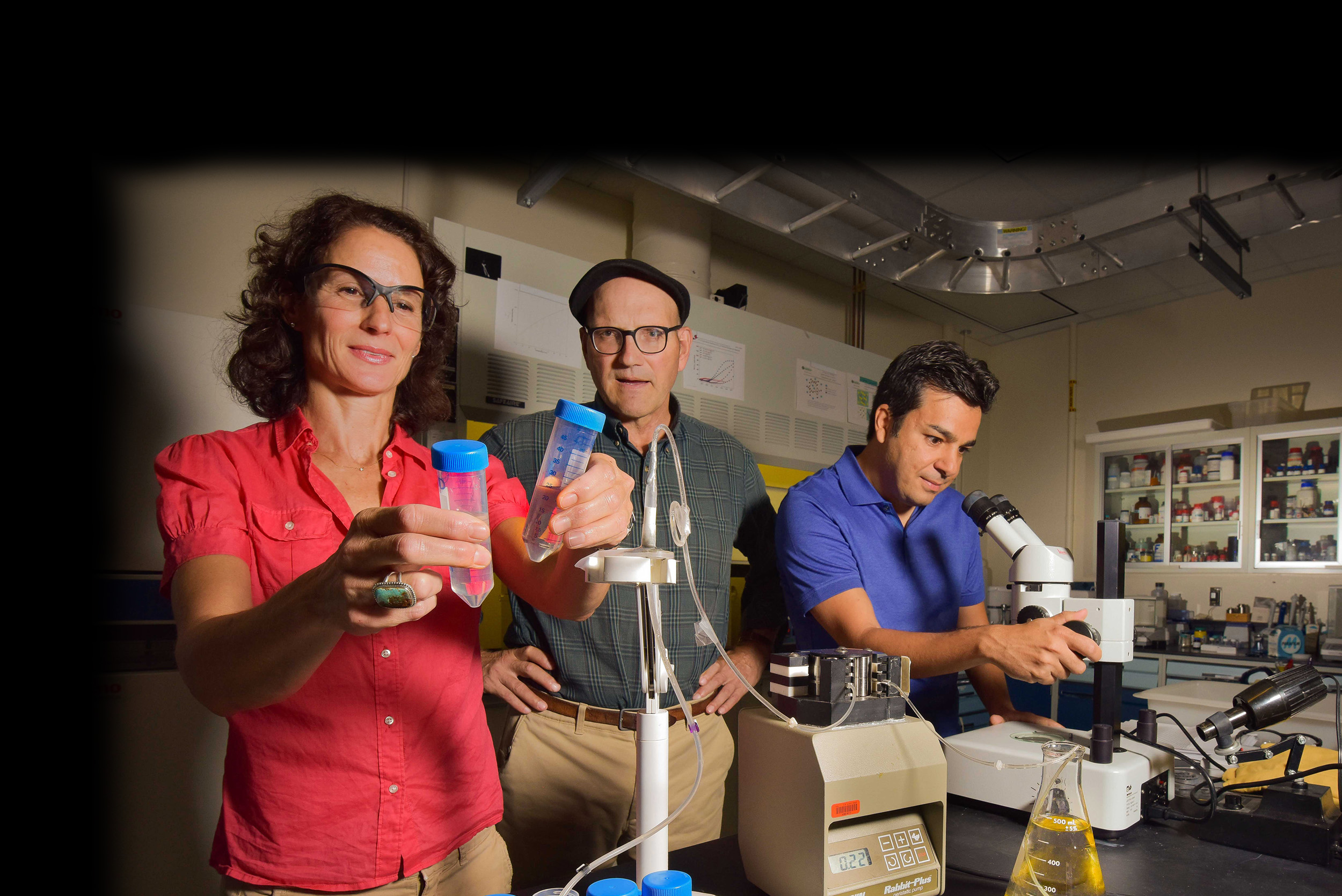Developing novel materials in support of critical mission needs.
Chemists at Sandia conduct research and development at the interface between biology, synthetic chemistry, and surface science to deliver prototype solutions in diverse applications. They provide knowledge about materials structure, properties, and performance and about the processes to produce, transform, and analyze materials to ensure mission success. For example, a key area of basic and applied research at Sandia seeks the improved use and control of combustion processes, which has led to the study of flame chemistry. The use of chemical imaging, as well as high-performance computer modeling and simulation, has helped reveal the intricate interplay of fluid dynamics and chemistry in combustion.
Chemical engineers are involved in analytic areas that span the spectrum from nuclear fuel cycle processes to nuclear weaponization and delivery system functionality. In their efforts to develop novel materials with defined properties for mission requirements, chemical engineers are investigating how the composition, microstructure, and preparation of materials affects their performance under specified conditions. New processing technologies, especially at the nano- and microscale, are being developed at Sandia to support future materials-processing needs.
Key areas for chemists and chemical engineers at Sandia
- Materials chemistry and interfacial science
- Biochemistry and synthetic chemistry
- Chemical dynamics and kinetics
- Combustion and flame chemistry
- Chemical imaging, modeling, and simulation
- Nanotechnology
- Geochemistry
- Chemical and biochemical analysis
- Reaction rate theory and modeling
